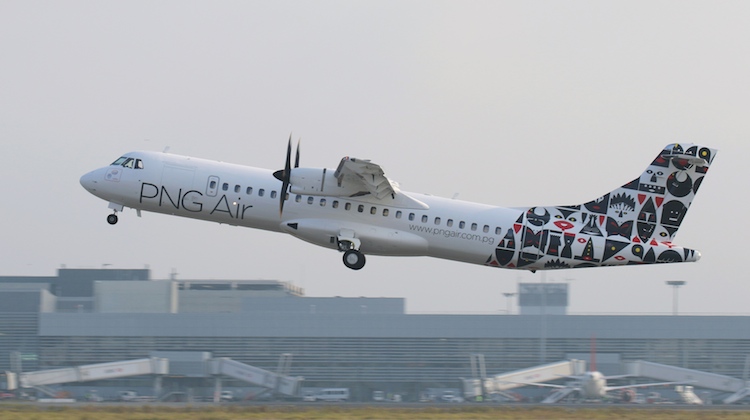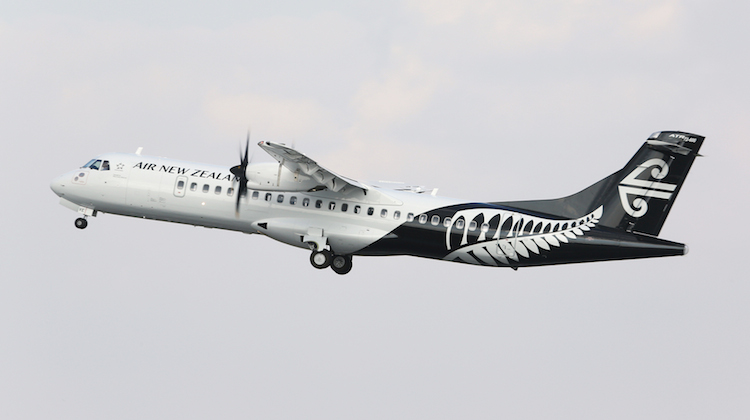
Turboprop airliner manufacturer ATR says the boom in online shopping could help spur demand for its aircraft in Australia as part of a mixed business model where cargo shipments supports passenger services on regional routes.
While Australia does not have the double-digit growth of other markets in Asia Pacific such as India or Indonesia, ATR regional sales director Jean-Daniel Kosowski says there is still much potential in Australia.
The large installed fleet of out-of-production 34-seat Saab 340s and 50-seat Dash 8-Q300s are of course a target for ATR when those airframes have to be replaced at the end of their operating lives.
However, as Regional Express (Rex) mentioned in 2014, it expected the Saab 340s in its fleet to have a remaining useful life of about 20 years, which suggests any potential replacement order is still likely quite some time away.
So for the present, Kosowski says the focus is on encouraging operators to use the ATR to open new regional routes and highlighting the opportunities for cargo.
“It’s true we don’t see the same type of growth that we see in Asia, that’s for sure,” Kosowski told Australian Aviation on the sidelines of the Association of Asia Pacific Airlines (AAPA) assembly of presidents in Jeju, South Korea on October 18.
“However, we still believe that more routes could be opened in Australia and we still believe that the ATR is a good aircraft because of the economics to open routes,” he said.
“Some people say that very often in Australia it is like flying from somewhere to nowhere but we still believe there are opportunities to fly from nowhere to nowhere.”
Kowoski noted ATR operators opened 155 new routes around the world in 2017. While not all will end up being successful, the figure does highlight the utility of the type.
Cargo potential
The rise of online shopping represents an opportunity ATR is keen to highlight in an Australian context.
For example, goods that arrive from China or the United States by air are often transferred onto trucks and taken to their destination by road.
An ATR turboprop could be used instead to transport bulk cargo, or even container cargo, to a regional location, saving time and reducing complexity.
Koswoski highlighted FedEx’s 2017 launch order for 30 new ATR freighter turboprops, with options for a further 20, as an example of this strategy.
“They … needed modern avionics and the older version could not offer that,” he said.

In an Australian context, having a mixed freight and passenger offering could make the economics on regional services work.
While the message is being heard, Kowoski said still more to do to convince Australian carriers of this approach.
“They are interested but I think not convinced yet,” Kowoski said.
“It is something we keep pushing. We’ll see what’s going to happen.”
In terms of old versus new, Kowoski said the decision on replacing aircraft very much depended on the availability of spares and operational reliability.
“The equation is not that easy for new aircraft versus completely amortised aircraft in which you have confidence that it flies OK,” he said.
“But as soon as the aircraft reaches the stage where you have bad dispatch [issues, with] difficult to get spares, then you have no choice.”

ATR product line up
ATR, which is jointly owned by Airbus and Leonardo, currently offers the ATR 72-600, which seats between 44 and 78 passengers depending on configuration, and the ATR 42-600 (30-50 seats). The aircraft are powered by Pratt & Whitney Canada PW127 engines and are offered in cargo and combi variants.
Its primary competitor is Bombardier’s Q400 turboprop, which can seat between 50 and 90 passengers depending on configuration.
While some in the aviation industry had been talking about a potential 100-seat turboprop, Kosowski said there was little demand for such an aircraft in the market and it was not currently under consideration at ATR.
“We realised that overall there was no real market for a turboprop over 70-80 pax,” Kosowski said.
“One of the reasons is that if you look at aircraft very often there is a correlation between the number of pax and distance and the turboprop is really super efficient over one hour and 15 minutes.
“So if you fly 100 people, 90 people over an hour and 15 minutes we think it doesn’t really make sense. We think it is better to have two flights a day with an ATR 72 than one flight a day with a bigger aircraft.”
“The argument of frequency was going against this 100-seater.”

Nonetheless, ATR is continuing to improve the existing aircraft in its line up.
It has offered a full glass cockpit since 2011, refreshed the cabin interiors – including larger storage bins – as well as reduced noise and lightened the airframe.
Looking further ahead, Kosowski said work is ongoing on a short takeoff and landing (STOL) ATR 42-600 that was first announced in 2017.
The new variant, dubbed ATR 42-600S, could takeoff with a full passenger load from runways as short as 800 metres. Currently ATR quotes a 1,025m takeoff distance for an ATR 42-600 with a max passenger load at ISA and sea level.
That would open up the ATR 42 to a lot of smaller regional airfields in Australia, New Zealand, Papua New Guinea and the South Pacific.
For example the ATR 42-600S could be significant for Lord Howe Island Airport, which is located about 425nm east of Sydney in the Pacific Ocean. The airport has a single runway in an east-west orientation that is 866m in length, which limits the types of aircraft that can operate there.
Currently, QantasLink schedules up to 19 flights a week to Lord Howe Island from Sydney, as well as some seasonal services from Port Macquarie, with 36-seat Dash 8 Q200 turboprops, the smallest aircraft type in its fleet.
While the ATR 42-600 is able takeoff from Lord Howe Island currently, its payload would be limited to around 36 passengers., it is understood.
Kosowski said the ATR 42-600S remains in development and is expected to fly in 2022.
“In simple terms it is basically using the rating power of the 72 on the 42 and having better brakes,” Kosowski explained.
“And the aileron just needs to be changed a little because if you have a more powerful engine if there is one engine out on takeoff, you need to be sure that the rudder can compensate.”
“It’s all about this. It’s not a huge modification.”

ATR is also working on improving the engines through extending the intervals between maintenance to help reduce costs for operators.
“We are discussing this with Pratt. We don’t have figures yet but we are looking at an engine that could stay longer on wing in order to reduce the cost,” Kosowski said.
“This is for us, the best fix we can do to the engine.”
And on the flightdeck, ATR is currently testing its Clearvision solution for low-visibility and night operations.
The system includes a camera fitted on the nose of an aircraft and a visual headset for pilots that showed both images of terrain and obstacles from a database and an augmented outside view in real time.
It was available as an optional upgrade on factory production aircraft. Airlines that have publicly said they will order the aircraft with the Clearvision include Europe-based Aurigny and Bhutan flag carrier Druk Air.












